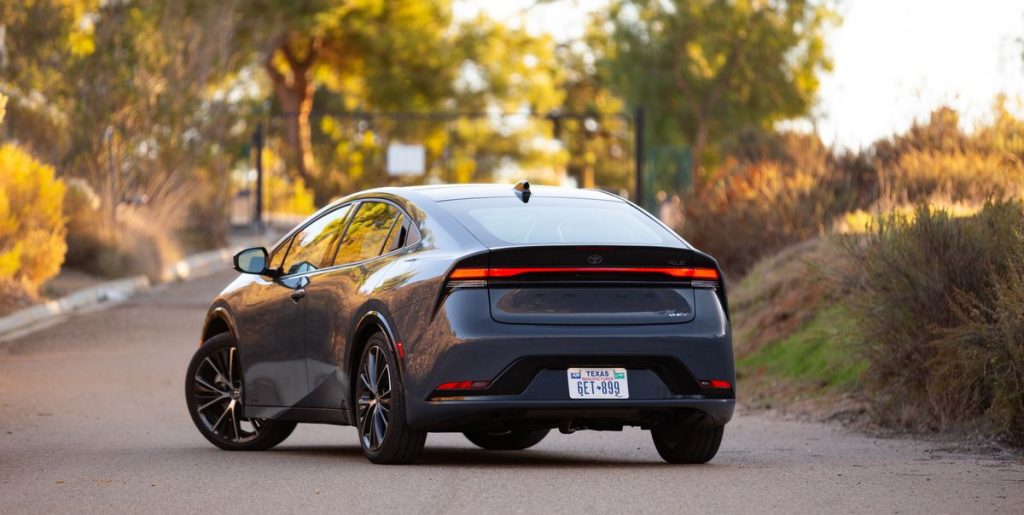The New Prius Looks Like a Hit. Toyota Still Doesn't Expect to Sell That Many

The new Toyota Prius is one of the most transformational redesigns in recent automotive history. In one year, it’s gone from one of the ugliest cars on sale to one of the slickest-looking Toyotas ever. The stunning new model is also more efficient, an order of magnitude better to drive, a stunning value, and already fetching interest from a younger, broader crowd. Dealers are already talking about five-figure markups. Toyota, though, still doesn’t expect much sales growth.
Everything about the New Prius
Toyota U.S. Vice President of Marketing Lisa Materazzo told Road & Track that the company is expecting annual sales of around 35,000 units for the non-Prime, standard Prius. That’s an improvement over the last full-year figure, but only barely. Toyota sold 33,968 Prius hybrids in 2021, despite the product’s age and Toyota’s considerable supply-chain constraints. With long-term gas price concerns at an all-time high, recession fears in the water, and a far more compelling product, the time seems right for a Prius resurgence. A 1000-unit improvement over one of the marque’s worst years in history sounds remarkably conservative. That’s especially true when you look at the Prius’s two best years, 2012 and 2013, which both saw sales top 230,000 units.
“There could definitely be an upside on that 35,000 estimate that we have, and we will make all that we can if the demand is there,” Materazzo told R&T.
That figure, then, isn’t the result of expected supply issues so much as a real look at the market.
“We don’t have a crystal ball, so it’s hard to say what supply chain interruptions we could have in the short term . . . We’ve been dealing with that for a while and we’ll continue to manage through that. I do think it’s reasonable that there could be upside potential, but ultimately the market will decide that.”
Even in the best-case scenario, though, Toyota doesn’t expect to ever come close to the high-water mark for Prius sales. While stronger-than-predicted demand could materialize—and reported dealer markups for first allocations suggest it may—the six-figure sales volumes of 2005–2017 era are likely gone for good.
“I do think it’s important to keep in mind that we have more hybrids and more electrified vehicles across our lineup. So there are simply more options for buyers than there were back in 2011, associated with that sales plan,” Materazzo said.
Back then, customers looking for a fuel-efficient hybrid were mostly stuck with the Camry or Prius. Today, they can get a RAV4 Hybrid, RAV4 Prime, Prius Prime, hybrid Tundra, or an all-electric BZ4x. A pie cut into that many pieces leaves little room for such a sales standout. Add in the stunning number of hybrid, plug-in, and battery-electric options from rivals—almost none of which existed in 2012—and it’s hard to see how any hybrid could recapture the second- and third-generation Prius’s chart-topping success.
A fantastic design and a newfound focus on performance are both huge improvements, but even Toyota knows they won’t be enough to change the way the wind is blowing.
This content is imported from OpenWeb. You may be able to find the same content in another format, or you may be able to find more information, at their web site.



